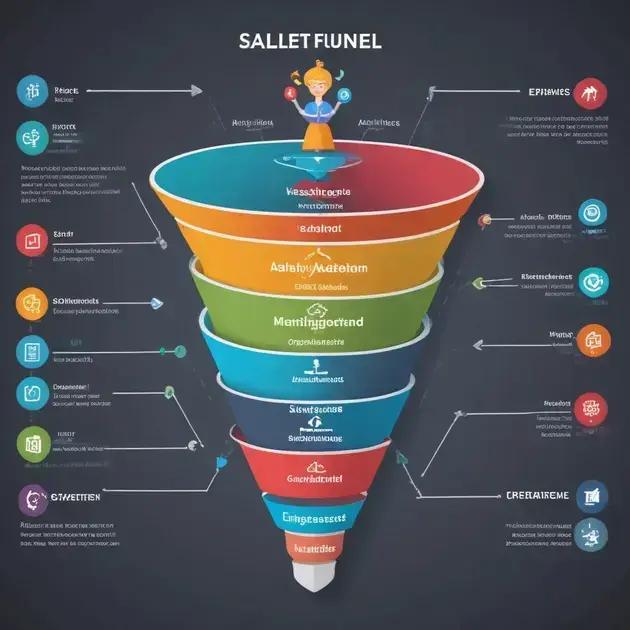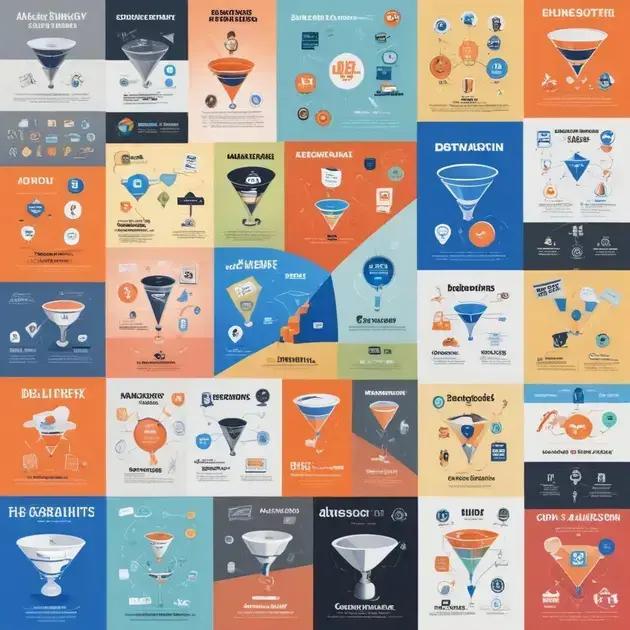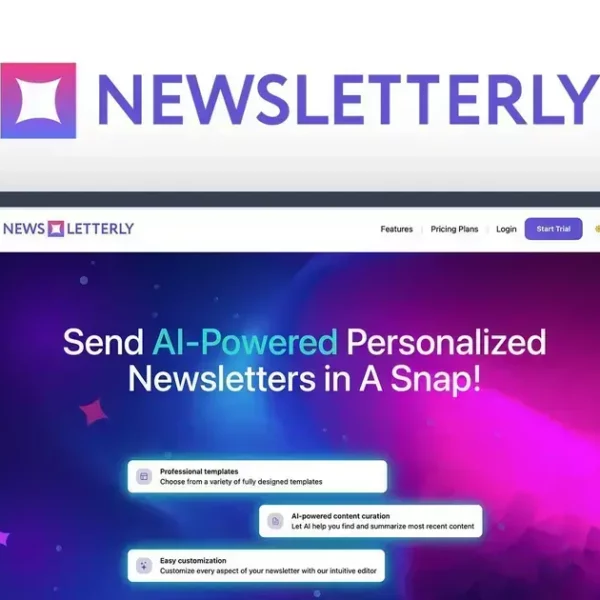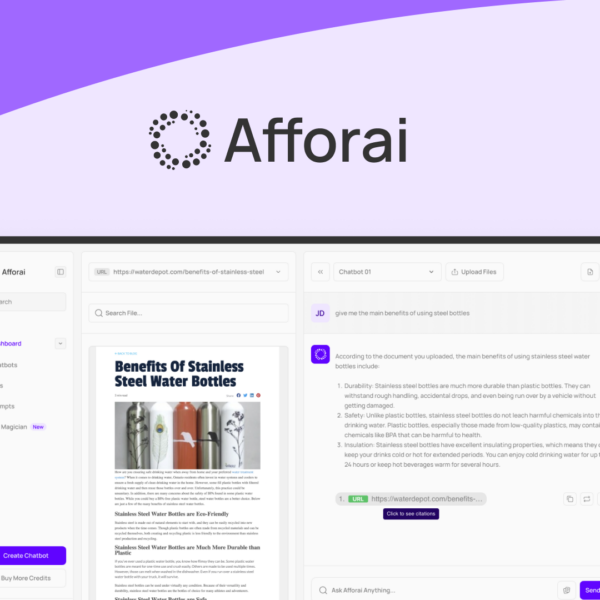The best sales funnels effectively guide customers from awareness to purchase by utilizing clear stages, understanding the target audience, and offering engaging content. Avoid common mistakes and continuously optimize your funnel to enhance conversion rates and drive business growth.
Best sales funnels are crucial for driving conversions in today’s digital marketplace. These funnels guide potential customers from initial interest to a completed purchase, maximizing the chances of sales and boosting revenue. In this article, we’ll explore what sales funnels are, their key components, and how to create an effective sales funnel that converts.
What are the Best Sales Funnels?
Best sales funnels are designed to effectively guide customers through each stage of the buying process. These funnels help to convert leads into paying customers by structuring the customer journey in a clear and compelling way.
Understanding the Sales Funnel Stages
The sales process involves several key stages: awareness, interest, decision, and action. At each of these stages, different marketing strategies can be employed to push leads closer to a purchase.
Stages of the Best Sales Funnels
- Awareness: At this stage, potential customers become aware of your product or service through advertisements, social media, or word-of-mouth.
- Interest: Once they are aware, prospects develop interest. This is the time to offer informative content that enhances their knowledge about your offerings.
- Decision: Here, leads evaluate their options. Provide clear comparisons and testimonials to help them make informed choices.
- Action: After evaluating, the target takes action—making a purchase. Remind them of the value they will receive.
Importance of an Effective Sales Funnel
Having a well-structured sales funnel can significantly increase the likelihood of converting leads into customers. By understanding the customer journey, businesses can tailor their marketing efforts to address potential concerns and encourage purchases.
Examples of Best Sales Funnels
Various businesses implement different sales funnel strategies successfully. For instance, an online retailer may use retargeting ads to bring back visitors who didn’t complete their purchases, while a service provider might offer a free trial to entice users into the decision stage.
Key Components of Effective Sales Funnels

Effective sales funnels are built on several key components that ensure they guide potential customers smoothly through the purchasing process. Understanding these elements will help you construct a funnel that effectively converts leads into sales.
1. Target Audience
Identifying and understanding your target audience is crucial. You need to know who they are, what they want, and what challenges they face. This knowledge allows you to tailor your messaging and content to resonate with them.
2. Awareness Stage
In this stage, potential customers become aware of your business. Use various marketing tactics, such as social media, SEO, and content marketing, to attract attention and make people aware of your brand.
3. Engaging Content
Providing valuable and engaging content at each stage of the funnel is essential. This may include blog posts, videos, eBooks, or webinars that educate potential buyers and build their interest in your products or services.
4. Lead Capture Mechanism
A strong sales funnel includes methods to capture leads effectively. This is often done through forms, landing pages, or calls to action (CTAs) that encourage website visitors to share their contact information in exchange for something valuable, like a discount or informative resource.
5. Nurturing Leads
Not all leads will convert immediately. Implement lead nurturing strategies such as email marketing to keep your leads engaged and informed. This can help move them further down the funnel towards making a purchase.
6. Analyzing and Optimizing
Finally, regularly analyze your sales funnel performance and make adjustments where needed. Track metrics like conversion rates, click-through rates, and customer feedback. This data will help you optimize your funnel over time and improve its effectiveness.
How to Create a Sales Funnel That Converts
Creating a sales funnel that converts involves strategic planning and execution. Here are essential steps to help you design an effective sales funnel:
1. Define Your Goals
The first step in creating a sales funnel is to define your specific goals. What do you want to achieve? This could include increasing sales, gathering leads, or boosting customer engagement. Having clear objectives will guide your funnel design.
2. Map Out Your Customer Journey
Understand the path your customers take from awareness to purchase. Identify the stages they go through and what they need at each point of their journey. This will help you to create targeted content for each stage.
3. Create Compelling Content
Engaging and informative content is crucial. Use blog posts, videos, infographics, and case studies to attract and educate your audience at various stages of the funnel. Ensure the content is valuable and encourages prospects to act.
4. Use Lead Magnets
Offer lead magnets that attract potential customers and encourage them to share their contact information. This could be a free eBook, a checklist, or a discount code. Lead magnets should provide significant value to entice users.
5. Optimize Your Landing Pages
Your landing pages must be clear and compelling. Use persuasive headlines, high-quality images, and effective CTAs (Calls to Action) to guide users toward taking the desired action. A/B testing different designs and messages can help find what works best.
6. Implement Email Marketing
After capturing leads, use email marketing to nurture those relationships. Send personalized follow-ups, share additional resources, and offer incentives. Consistent communication maintains engagement and moves leads further down the funnel.
7. Analyze and Adjust
Continuously monitor your sales funnel performance. Use analytics tools to track key metrics such as conversion rates and user engagement. Use this data to make informed adjustments and optimize your funnel for better results.
Analyzing the Best Sales Funnel Examples

Analyzing real-world examples of best sales funnels can provide valuable insights into effective strategies. Here are some notable examples that illustrate how sales funnels can drive conversions:
1. Amazon
Amazon showcases an exceptional sales funnel by streamlining the user experience. Their funnel starts with personalized recommendations based on previous browsing and purchasing history. This approach captures attention and encourages users to explore more products, ultimately leading to higher conversion rates.
2. Dropbox
Dropbox effectively employs a freemium model that attracts users by offering free storage space. Once users see the value in the service, they are likely to convert to paid plans. This funnel taps into the psychological principle of reciprocity, motivating users to upgrade after experiencing the benefits.
3. HubSpot
HubSpot is famous for its inbound marketing strategy, which uses educational content to draw users in. They offer free resources, such as eBooks and webinars, in exchange for contact information. This strategy helps nurture leads over time, guiding them through the funnel with helpful content until they are ready to purchase.
4. Nike
Nike effectively uses a strong brand identity and storytelling in their sales funnel. Through engaging storytelling and social media marketing, they create awareness and interest. Their website optimizes the shopping experience with user-friendly navigation and personalized recommendations to enhance the customer journey.
5. ClickFunnels
ClickFunnels has a well-structured sales funnel that includes a compelling landing page with a clear call to action. They offer a 14-day free trial that encourages users to experience the product firsthand. This approach increases sign-ups and allows users to see the value of the software before committing.
6. Adobe
Adobe uses a combination of free trials and targeted email marketing to convert leads. By allowing potential customers to try their software products for free, they can demonstrate the value, leading to higher conversion rates when users are ready to purchase.
7. Mailchimp
Mailchimp effectively combines email marketing and a simple sign-up process in their sales funnel. They offer free accounts for new users to start with. As users become more involved, they receive targeted communication encouraging them to upgrade as their needs grow.
Common Mistakes to Avoid in Sales Funnels
When creating a sales funnel, avoiding common mistakes is essential for success. Here are some pitfalls to watch out for:
1. Lack of Clear Goals
Without clear goals, it can be difficult to measure the success of your sales funnel. Define what you want to achieve, such as increasing conversions or retaining customers. This focus will guide your strategies and help you analyze effectiveness.
2. Ignoring the Target Audience
Not understanding your target audience can lead to ineffective messaging. Pay attention to their needs, preferences, and pain points. Tailoring your content and offers to their interests will result in a more engaging sales funnel.
3. Overcomplicating the Funnel
A complicated sales funnel can confuse potential customers and lead to drop-offs. Keep the process simple and ensure that each step logically leads to the next. A straightforward path encourages users to move forward without frustration.
4. Neglecting Mobile Users
Many customers browse on mobile devices. Failing to optimize your sales funnel for mobile can result in lost conversions. Ensure your website and landing pages are mobile-friendly, with clear calls to action and easy navigation.
5. Forgetting to Nurture Leads
Many businesses focus solely on capturing leads and forget to nurture them. Keep in touch with prospects through email marketing, offering valuable content to educate and engage them. This process is vital for moving leads deeper into your funnel.
6. Not Analyzing Performance
Failing to track and analyze your sales funnel’s performance can hinder improvement. Use analytics tools to monitor key metrics such as conversion rates and customer interactions. Regular analysis allows you to identify areas for optimization.
7. Skipping Testing and Optimization
Assuming your initial design is perfect can be a costly mistake. Regularly test different elements of your sales funnel, such as headlines, images, and CTA buttons. A/B testing helps you determine what resonates best with your audience.
8. Disregarding Customer Feedback
Your customers can provide valuable insights into their experiences with your sales funnel. Encourage feedback and use it to make necessary improvements. Listening to customers can help you address their concerns and enhance their journey.
In Summary: Mastering Your Sales Funnel
Creating an effective sales funnel is essential for driving conversions and growing your business. By understanding the key components and avoiding common mistakes, you can build a funnel that works for you.
From defining clear goals to nurturing leads, each step plays an important role in guiding potential customers toward making a purchase. Remember to analyze the performance of your funnel regularly and make necessary adjustments to optimize results.
With the right strategies in place, you can turn leads into loyal customers and boost your sales. Keep learning and adapting to ensure your sales funnel continues to meet the needs of your audience.
FAQ – Frequently Asked Questions about Sales Funnels
What is a sales funnel?
A sales funnel is a marketing model that represents the customer journey from awareness to purchase, showcasing the steps a potential buyer takes.
Why is it important to have a sales funnel?
Having a sales funnel helps businesses effectively guide leads through the purchasing process, increasing the chance of conversion and sales.
What are the key stages of a sales funnel?
The key stages of a sales funnel are awareness, interest, decision, and action. Each stage involves different marketing strategies to nurture leads.
What common mistakes should I avoid in my sales funnel?
Common mistakes include lacking clear goals, ignoring the target audience, overcomplicating the funnel, and neglecting to analyze performance.
How can I optimize my sales funnel?
You can optimize your sales funnel by regularly testing different elements, analyzing performance metrics, and incorporating customer feedback for improvements.
What type of content works best for sales funnels?
Engaging content such as blog posts, videos, infographics, and lead magnets works best for guiding potential customers through the sales funnel.




